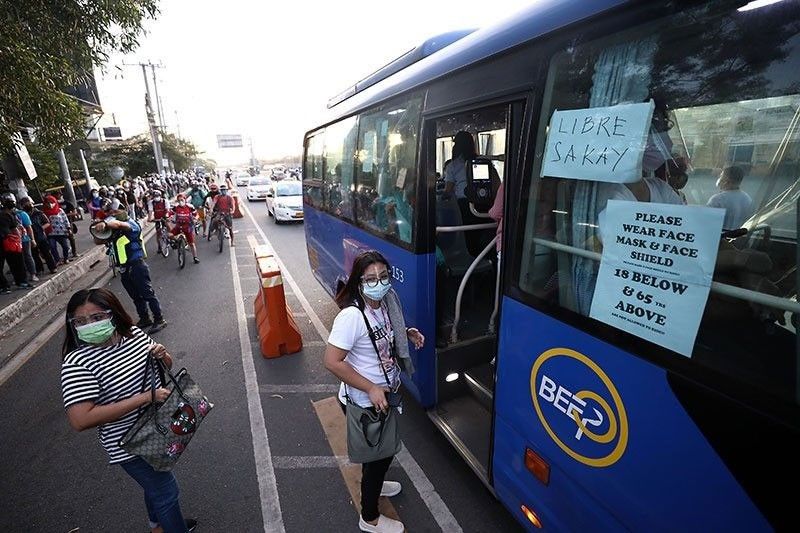Enhance Brand Reach with Transit Advertising Philippines
Enhance Brand Reach with Transit Advertising Philippines
Blog Article
Just How Transit Advertising And Marketing Can Transform Mass Transit Spaces Into Dynamic Advertising And Marketing Platforms
Transportation advertising holds significant capacity to redefine public transport areas right into vivid advertising and marketing platforms that engage and notify. As we check out the complex advantages and advancing strategies of transportation advertising, it increases the concern of how this change might redefine our interactions with both brands and the urban environment.
Benefits of Transit Advertising And Marketing

In addition, transit advertising is extremely economical compared to standard media. It allows marketers to achieve high perceptions at reduced expenses, taking full advantage of return on investment. The restricted audience of commuters gives a chance for brand names to communicate their messages to individuals who are usually receptive throughout their traveling times.
Additionally, the vibrant nature of transit advertising and marketing allows campaigns to be upgraded frequently, making sure that messaging continues to be prompt and relevant. This versatility can be crucial in replying to market fads or promotional events, maintaining the brand name top-of-mind for consumers. Finally, the prevalent visibility of transit advertising adds to brand name recall; duplicated exposure within familiar travel contexts strengthens brand name awareness and fosters consumer commitment, inevitably driving sales and enhancing brand track record.
Kinds Of Transit Marketing
Public transport systems provide various formats for marketing, each catering to different advertising approaches and target market involvement methods. One prominent type is exterior bus and train wraps, which cover the entire vehicle and create a mobile billboard effect, enabling high visibility in urban environments. These wraps can capture attention as they traverse active roads, getting to a varied target market.
One more prominent format is indoor advertising and marketing, that includes posters, digital screens, and advertisements on transportation seats. These placements involve guests during their journey, enhancing brand messaging in a confined room. Digital shows, specifically, offer the benefit of dynamic content, making it possible for marketers to update messages in real-time.
Terminal marketing is also substantial, featuring posters, banners, and interactive kiosks within transportation stations. These advertisements take advantage of foot traffic and can target details demographics based upon location.
Last but not least, marketing partnerships with transportation authorities can cause unique projects, such as themed transit experiences or occasions, enhancing the total engagement with travelers. Each sort of transportation advertising supplies distinct advantages, permitting brand names to customize their technique to properly reach their target audience within the general public transport ecological community.
Engaging Travelers Efficiently
Travelers are significantly swamped with advertising and marketing messages during their daily trips, making it important for brand names to involve them in cutting-edge methods. To catch interest in this crowded space, marketers should prioritize imagination and importance. Making use of captivating visuals and succinct messaging can considerably improve the chance of engagement.
Interactive aspects, such as QR codes or enhanced fact attributes, can also transform static advertisements right into immersive experiences, promoting a deeper link with the target market. Brand names should focus on attending to travelers' demands and passions, tailoring messages to resonate with their lifestyle, whether through promotions for local companies or services created to improve their travelling experience.
Additionally, timing plays a critical duty; purposefully positioning advertisements during peak commuting hours can make best use of presence and influence. Involving travelers efficiently likewise involves leveraging social media sites integration, allowing passengers to share their experiences or promotions straight from transportation platforms, thus enhancing brand reach.
Essentially, reliable engagement depends upon recognizing the traveler journey and creating engaging, interactive, and appropriate marketing experiences that not only record interest however also drive activity and loyalty. By doing so, brands can change mass transit into a vibrant marketing platform that reverberates with its audience.

Measuring Advertising Influence
Just how can brands accurately analyze the efficiency of their ad campaign in transportation environments? Gauging the effect of transit advertising and marketing requires a complex technique that combines measurable and qualitative metrics. One widespread technique is tracking involvement with mobile analytics, where brand names can examine foot traffic patterns and application interactions in the past, during, and after projects.
Surveys can supply important insights right into brand recall and customer sentiment, enabling brands to assess how well their messages reverberate with commuters. Furthermore, keeping track of social media sites engagement relevant to specific projects can expose changes in public perception and brand name discussion.

In addition, collaborating with transit agencies can boost dimension accuracy, as they commonly have detailed market data on ridership patterns. By incorporating these techniques, go right here brands can develop an extensive understanding of their marketing efficiency, making certain that their projects not just get to but also impact their target audiences efficiently.
Future Patterns in Transportation Marketing
A considerable change is expected en route marketing as technical improvements and altering customer habits reshape the landscape. Transit Advertising Philippines. The integration of interactive media and electronic display screens is anticipated to improve interaction, allowing brands to deliver vibrant web content that reverberates with diverse audiences. As mass transit systems embrace smart modern technology, marketers will certainly utilize real-time data analytics to tailor messages based on passenger demographics and behaviors
Furthermore, augmented fact (AR) is positioned to transform the way travelers engage with advertisements. By providing immersive experiences, AR can change a mundane journey right into an appealing narrative that records interest and fosters brand name loyalty. This innovation will likely urge advertisers to create even more experiential campaigns that drive customer interaction.
Sustainability is an additional important trend affecting transit advertising. As environmental consciousness expands, brand names will progressively look for to line up with environmentally friendly practices, using sustainable materials and advertising eco-friendly campaigns within their campaigns.
Verdict
In conclusion, transit advertising provides considerable benefits by boosting brand name presence and involving a restricted target market. As fads develop, the capacity for ingenious communications in between brands and commuters is poised to grow, guaranteeing that transit advertising remains a company website vital component of modern advertising methods.
Transportation marketing holds considerable potential to redefine public transportation rooms right into lively advertising and marketing platforms that engage and inform. The prevalent existence of transportation marketing adds to brand name recall; duplicated exposure within familiar travel contexts strengthens brand name recognition and fosters customer loyalty, eventually boosting and driving sales brand credibility.
How can brand names precisely examine their explanation the effectiveness of their advertising campaigns in transit settings?In conclusion, transit advertising supplies considerable advantages by enhancing brand visibility and engaging a restricted audience. Transit Advertising Philippines. As fads progress, the potential for cutting-edge interactions in between brands and travelers is poised to expand, guaranteeing that transportation marketing remains a vital part of modern advertising and marketing techniques
Report this page